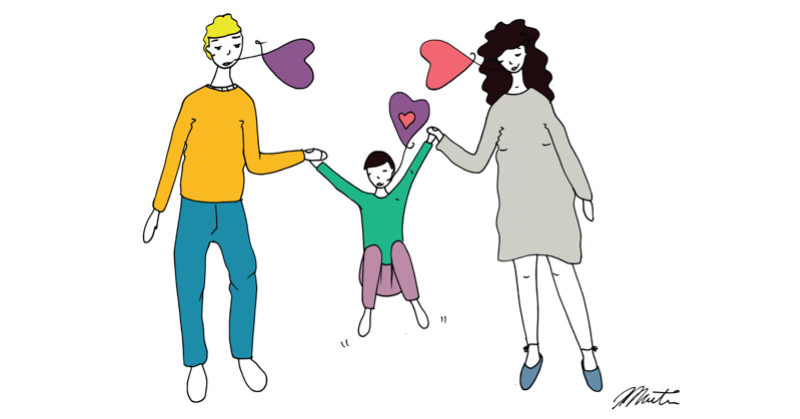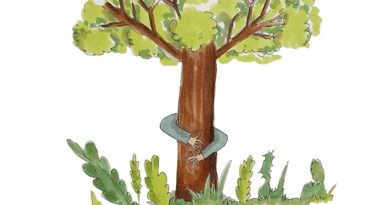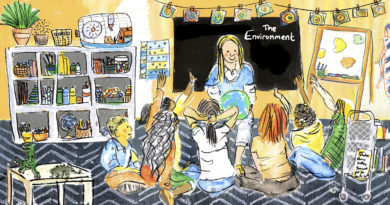Speaking multiple languages is not uncommon for expat children in Switzerland. You may speak your native language at home as a family, but then your child is exposed to another language in the crèche or at school.
Many bilingual or multilingual families worry about their children’s speech and language development. This mostly comes from past myths on how learning two languages can impede language development and cause delays or even disorders. Parents in the past were even told by their family doctors to only speak one language so as not to confuse their child. Those myths have been debunked as more and more studies show that the instance of children with speech and language disorders is the same among bilingual children compared to monolingual children.
So how can you tell if your child is struggling with speech and language and may need help? The basic rule of thumb is that a bilingual child will reach developmental milestones at the same time as a monolingual child. The thing to remember is to include ALL the words your child is using, regardless of what language they are.
Don’t worry if your child mixes languages together – this will pass! If your 24-month-old says, “Want Schoppe” (Schoppe is Swiss-German for bottle), she is using two words together, and that is developmentally appropriate.
Sometimes when a child is exposed to a new language there is a period where he might not talk much; this is normal. Also, if a child has mastered a skill in one language but not the other, one language may be dominant, and the skill might just take time to develop in the other language. Language issues always show up in both languages.
If you suspect that your child is struggling with speech and language, it’s important to get him/her evaluated as early as possible. Having a language delay can have an adverse effect on learning and may cause problems in school. The sooner your child gets the extra help she needs, the sooner she can overcome it!
Here is some great information about typical language acquisition from the American Speech and Hearing Association:
* https://www.asha.org/public/speech/development/01/
| Age |
Hearing and Understanding |
Talking |
| Birth–3 months |
- Startles at loud sounds.
- Quiets or smiles when you talk.
- Seems to recognize your voice. Quiets if crying.
|
- Makes cooing sounds.
- Cries change for different needs.
- Smiles at people.
|
| 4–6 months |
- Moves her eyes in the direction of sounds.
- Responds to changes in your tone of voice.
- Notices toys that make sounds.
- Pays attention to music.
|
- Coos and babbles when playing alone or with you.
- Makes speech-like babbling sounds, like pa, ba, and mi.
- Giggles and laughs.
- Makes sounds when happy or upset.
|
| 7 months–1 year |
- Turns and looks in the direction of sounds.
- Looks when you point.
- Turns when you call her name.
- Understands words for common items and people—words like cup, truck, juice, and daddy.
- Starts to respond to simple words and phrases, like “No,” “Come here,” and “Want more?”
- Plays games with you, like peek-a-boo and pat-a-cake.
- Listens to songs and stories for a short time.
|
- Babbles long strings of sounds, like mimi upup babababa.
- Uses sounds and gestures to get and keep attention.
- Points to objects and shows them to others.
- Uses gestures like waving bye, reaching for “up,” and shaking his head no.
- Imitates different speech sounds.
- Says 1 or 2 words, like hi, dog, dada, mama, or uh-oh. This will happen around his first birthday, but sounds may not be clear.
|
| 1 – 2 years |
- Points to a few body parts when you ask.
- Follows 1-part directions, like “Roll the ball” or “Kiss the baby.”
- Responds to simple questions, like “Who’s that?” or “Where’s your shoe?”
- Listens to simple stories, songs, and rhymes.
- Points to pictures in a book when you name them.
|
- Uses a lot of new words.
- Uses p, b, m, h, and w in words.
- Starts to name pictures in books.
- Asks questions, like “What’s that?”, “Who’s that?”, and “Where’s kitty?”
- Puts 2 words together, like “more apple,” “no bed,” and “mommy book.”
|
| 2 – 3 years |
- Understands opposites, like go–stop, big–little, and up–down.
- Follows 2-part directions, like “Get the spoon and put it on the table.”
- Understands new words quickly.
|
- Has a word for almost everything.
- Talks about things that are not in the room.
- Uses k, g, f, t, d, and n in words.
- Uses words like in, on, and under.
- Uses two- or three- words to talk about and ask for things.
- People who know your child can understand him.
- Asks “Why?”
- Puts 3 words together to talk about things. May repeat some words and sounds
|
| 3 – 4 years |
- Responds when you call from another room.
- Understands words for some colors, like red, blue, and green.
- Understands words for some shapes, like circle and square.
- Understands words for family, like brother, grandmother and aunt.
|
- Answers simple who, what, and where questions.
- Says rhyming words, like hat–cat.
- Uses pronouns, like I, you, me, we, and they.
- Uses some plural words, like toys, birds, and buses.
- Most people understand what your child says.
- Asks when and how questions.
- Puts 4 words together. May make some mistakes, like “I goed to school.”
- Talks about what happened during the day. Uses about 4 sentences at a time.
|
| 4 – 5 years |
- Understands words for order, like first, next, and last.
- Understands words for time, like yesterday, today, and tomorrow.
- Follows longer directions, like “Put your pajamas on, brush your teeth, and then pick out a book.”
- Follows classroom directions, like “Draw a circle on your paper around something you eat.”
- Hears and understands most of what she hears at home and in school.
|
- Says all speech sounds in words. May make mistakes on sounds that are harder to say, like l, s, r, v, z, ch, sh, and th.
- Responds to “What did you say?”
- Talks without repeating sounds or words most of the time.
- Names letters and numbers.
- Uses sentences that have more than 1 action word, like jump, play, and get. May make some mistakes, like “Zach gots 2 video games, but I got one.”
- Tells a short story.
- Keeps a conversation going.
- Talks in different ways, depending on the listener and place. Your child may use short sentences with younger children. He may talk louder outside than inside.
|
By Birgit Suess
Birgit is a Swiss-American speech therapist who speaks English, Züüridütsch and German. You can check out her blog at www.SweetSunshineTherapy.com.
Illustration by Laura Munteanu
Laura has studied journalism and advertising, and has worked as a journalist and an illustrator. She has illustrated for magazines, websites, charities and diverse campaigns. She lives in Zurich with her husband and ten-year-old daughter.





What a shame the Swiss education system lets kids who need speech therapy down. I am exceptionally disillusioned with the “Swiss Way”.